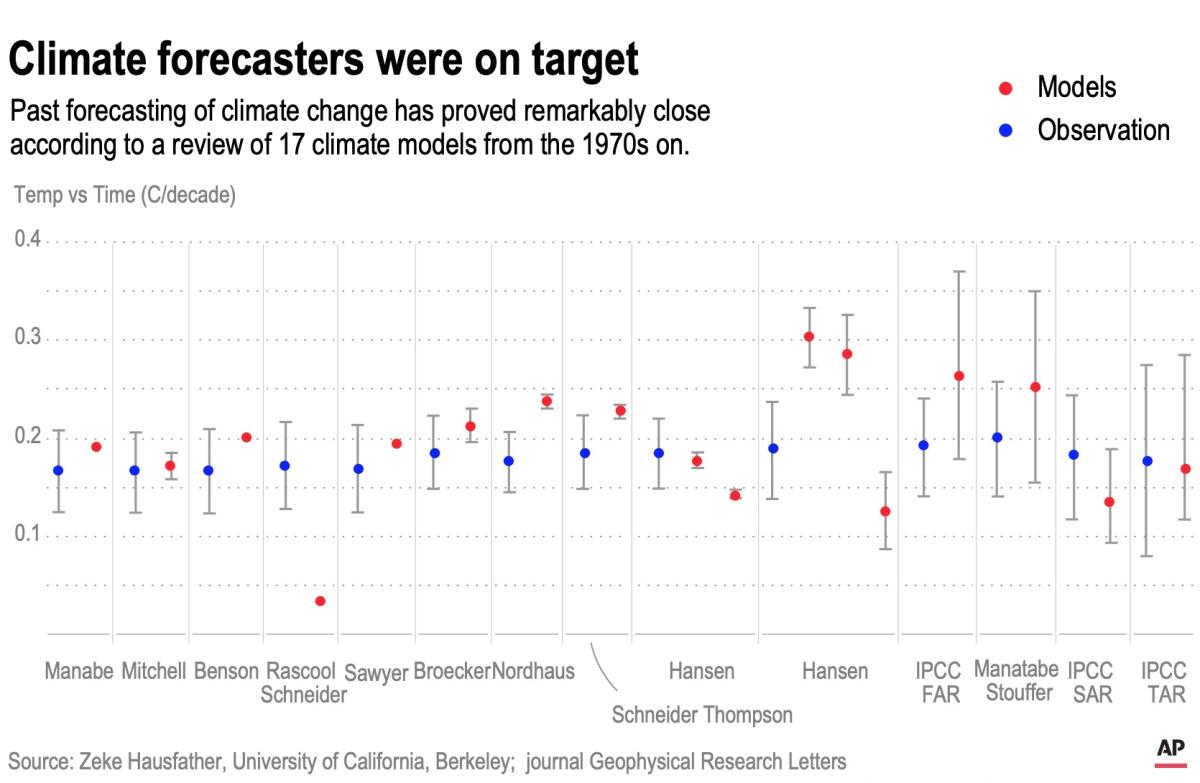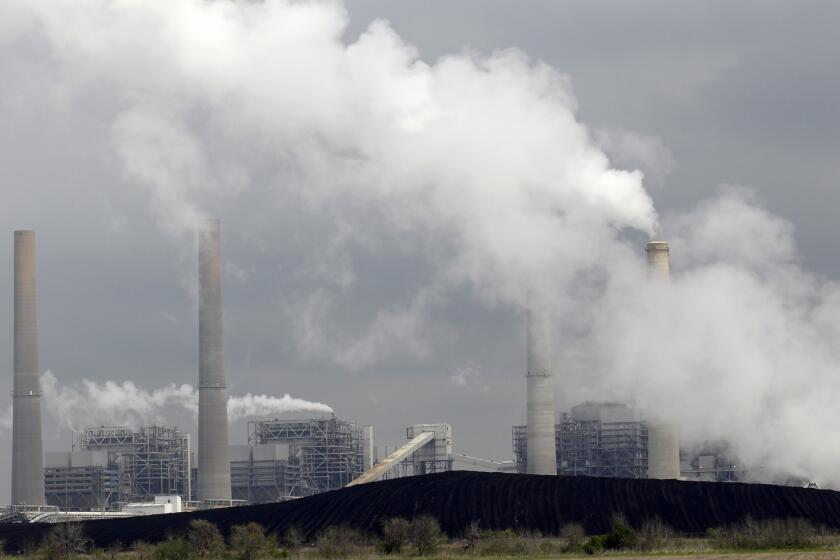Climate models are often attacked, but most of the time they’re remarkably good

The computer models used to simulate what heat-trapping gases will do to global temperatures have been pretty spot-on in their predictions, a new study found.
After years of hearing critics blast the models’ accuracy, climate scientist Zeke Hausfather decided to see just how good they have been. He tracked down 17 models used between 1970 and 2007 and found that the majority of them predicted results that were “indistinguishable from what actually occurred.”
“By and large our models have gotten it right, plus or minus a little bit,” said Hausfather, a UC Berkeley scientist who is climate and energy director at the Breakthrough Institute. “If they get it wrong, it’s slightly on the warm side, but I wouldn’t read too much into that.”
Ten of the 17 were close to the temperatures that actually happened, said Hausfather, lead author of a study in Wednesday’s journal Geophysical Research Letters.
But scientists actually got the physics right even more than that, Hausfather said.
Climate models are based on two main assumptions. One is the physics of the atmosphere and how it reacts to heat-trapping gases. The other is the amount of greenhouse gases put into the air.
It’s a climate change milestone: The amount of carbon dioxide released by burning fossil fuels will hit 37 billion tons this year, setting another record high. A climate researcher discusses the latest findings.
A few times, scientists were wrong in their predictions about the growth of carbon pollution, saying there would be more of the gases than there actually were, Hausfather said. If they got the amount of heat-trapping gases wrong, they then got the temperatures wrong.
So Hausfather and colleagues, including NASA climate scientist Gavin Schmidt, looked at how well the models did on just the pure science, taking out the emissions factor. On that count, 14 of the 17 computer models accurately predicted the future.
The scientists also gave each computer simulation a “skill score” that essentially gave a percentage grade to each one. The average grade was a 69%.
One of the earliest computer models, made in 1970, got a 91%. What’s so impressive about that is that at the time, climate change wasn’t noticeable in the yearly temperature records like it is now, Hausfather said.
Stanford University climate scientist Noah Diffenbaugh, who wasn’t part of the study, called the work creative and the results striking.
“Even without knowing what the current level of greenhouse gas concentrations would be, the climate models predicted the evolution of global temperature quite well,” Diffenbaugh said.
It’s crucial that these models are accurate because “we have one planet Earth, so we can’t conduct controlled experiments on the actual climate system,” he added.
University of Illinois climate scientist Donald Wuebbles, who wasn’t part of the study either, said climate change “deniers do a lot of weird things to misrepresent models. None of those analyses have been valid and they should be ignored. We should no longer be debating the basic science of climate change.”







